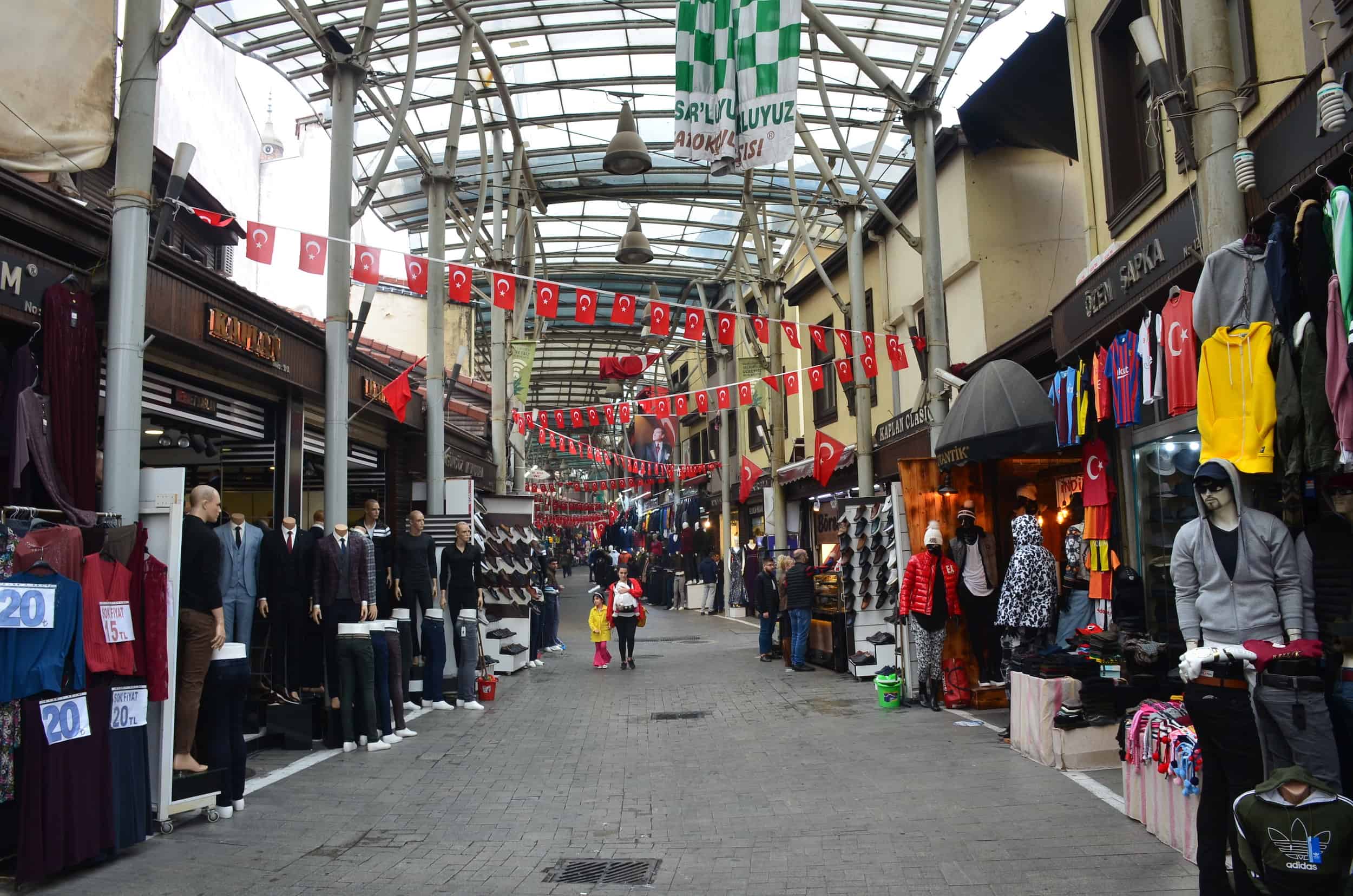Last updated on .
My favorite thing about the historic city center of Bursa, Turkey, is the network of vibrant open-air and covered bazaars. The bazaar area is included in the UNESCO World Heritage listing for Bursa.
The bazaars have been active since the 14th century. Rather than just one huge bazaar, the area is a collection of several different small bazaars. They all have different names related to the trades that were practiced in them, although most have lost their original functions. Mixed in with all the action are a handful of small mosques, hamams, and other historic buildings. The bazaars are also connected to several historic Ottoman caravanserais, which are covered in another entry.
From east to west, the main artery through the bazaar area of Bursa begins as the Salt Bazaar, then continues as the Long Bazaar and Covered Bazaar. The final stretch is through the Coppersmiths’ Covered Bazaar.
Salt Bazaar
The Salt Bazaar (Tuz Pazarı) runs for about 300 meters between İnönü and Çömlekçiler Avenues. It contains mostly clothing, shoe stores, and housewares. You can access Tuzhan from this stretch of the bazaar.

Food Market
If you’re looking for a colorful food market, take a detour at the end of the Salt Bazaar and head down Çömlekçiler Avenue. You’ll find all kinds of Turkish specialties along with fruits, vegetables, nuts, honeycomb, fish, cheese, and more. Wander down the side streets to discover more. Personally, I enjoy exploring this section of the bazaars more at night than during the day.
Long Bazaar
Back to the main street, the next section is the Long Bazaar (Uzun Çarşı). It’s more of the same kinds of stores you’ll see on the first stretch of the road, but you’ll start to encounter some jewelry stores. It runs for about 150 meters and gives access to Fidan Han and Koza Han.
Covered Bazaar
The open-air section ends where the Covered Bazaar (Kapalı Çarşı) begins. Clothing and jewelry stores dominate the 150 meters, and you can access Emir Han and the Bedesten.
Old Mirrored Bazaar
Immediately after crossing into the Covered Bazaar, if you turn left you can enter the Old Mirrored Bazaar (Eski Aynalı Çarşı). It was actually built as the Gazi Orhan Bey Hamam (Gazi Orhan Bey Hamamı) in the 14th century. The hamam was part of the Orhan Gazi Mosque complex.
The Gazi Orhan Bey Hamam was a double bath consisting of a men’s and women’s section. It underwent major repairs in the 15th, 16th, and 18th centuries, and was destroyed by fire in 1958. After the fire, the men’s section became a bazaar and the women’s section became a workshop and warehouse.
If you’re shopping for cultural items unique to Bursa, such as Karagöz and Hacivat shadow puppets, or other ethnographical items, you’ll find them at the Old Mirrored Bazaar.
Bedesten
The Bedesten is just north of the Covered Bazaar. It was built between 1389 and 1402 by Sultan Bayezid I and reconstructed after an earthquake in 1855. It consists of two long halls covered by domes with a fountain in the center. Today, the Bedesten functions as the Jewelers’ Bazaar (Kuyumcular Çarşısı). You an access Geyve Han from the Bedesten.
Side Street
At the west end of the Covered Bazaar and the Bedesten, if you turn right there’s another covered section of street where locals shop for clothing, textiles, luggage, and other goods. Halfway down there’s an entrance to İpek Han.
The street leads to an open-air area where you can access the İvazpaşa Bazaar (İvazpaşa Çarşısı) and Pirinç Han.
Coppersmiths’ Covered Bazaar
Continuing west from the Covered Bazaar is the Coppersmiths’ Covered Bazaar (Bakırcılar Kapalı Çarşısı). It consists of the main street running through it along with some attractively covered side streets. Most of the stores are geared towards locals shopping for clothing.
Towel Makers’ Bazaar
The area south of the Coppersmiths’ Bazaar is the Towel Makers’ Bazaar (Havlucular Çarşısı). In this bazaar you can actually find towels and items used in hamams. There are also lots of stores selling children’s clothing and accessories.
Şengül Hamam
In front of the Grand Mosque is the former Şengül Hamam (Şengül Hamamı). The hamam was built by Sultan Bayezid I in the 15th century and underwent major renovations in 1551 and 1718. Its income was dedicated to the upkeep of the Grand Mosque. it was used as a bath until 1930. Today, it functions as the Silversmiths’ Bazaar (Gümüşçüler Çarşısı) and is full of jewelry shops selling silver.